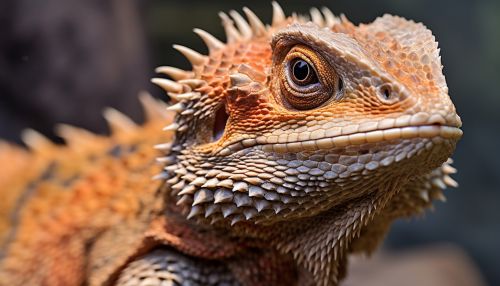Lizard
Classification and Evolution
Lizards are a large and diverse group of reptiles belonging to the order Squamata, which also includes snakes. They are classified into more than 60 families, with over 6,000 species known to science. The term "lizard" is a broad term that encompasses a wide variety of species, each with its own unique characteristics and adaptations.


The evolution of lizards is a complex process that has been ongoing for millions of years. The earliest known lizards appeared in the fossil record in the late Jurassic period, approximately 200 million years ago. These early lizards were small, insectivorous creatures that likely lived in the undergrowth of forests. Over time, lizards have evolved into a wide variety of forms, including large, carnivorous monitors and small, leaf-litter dwelling geckos.
Anatomy and Physiology
Lizards exhibit a wide range of body forms and sizes. The smallest lizards, such as certain species of geckos, can be as small as a few centimeters in length, while the largest, the Komodo dragon, can reach lengths of up to 3 meters. Despite this diversity in size, all lizards share certain common anatomical features.
The body of a lizard is covered in scales, which are made of keratin, the same protein that makes up human hair and nails. These scales serve to protect the lizard from injury and also aid in water retention. Lizards are ectothermic, meaning they rely on their environment to regulate their body temperature. They do this by basking in the sun to warm up and seeking shade to cool down.
Lizards have a highly developed visual system, with excellent color vision and the ability to detect movement at a distance. Some species, such as the chameleon, have eyes that can move independently of each other, allowing them to look in two different directions at once.
Behavior and Ecology
Lizards are found in a wide variety of habitats, from deserts to rainforests, and from sea level to high mountain ranges. They are primarily terrestrial, although some species are arboreal, living in trees, and others are semi-aquatic.
Most lizards are insectivorous, feeding on a wide variety of insects and other small invertebrates. However, some larger species, such as the Komodo dragon, are capable of taking larger prey, including mammals and birds.
Lizards are known for their ability to shed their tails when threatened by predators, a behavior known as autotomy. The detached tail continues to wriggle, distracting the predator and allowing the lizard to escape. In many species, the tail will regenerate over time.
Conservation
Many species of lizards are threatened by habitat loss, climate change, and other human activities. Conservation efforts for lizards include habitat protection, captive breeding programs, and reintroduction efforts for endangered species.
However, conservation of lizards is complicated by the fact that many species have very specific habitat requirements and cannot easily adapt to changes in their environment. Furthermore, because lizards are often small and inconspicuous, they are frequently overlooked in conservation planning.
